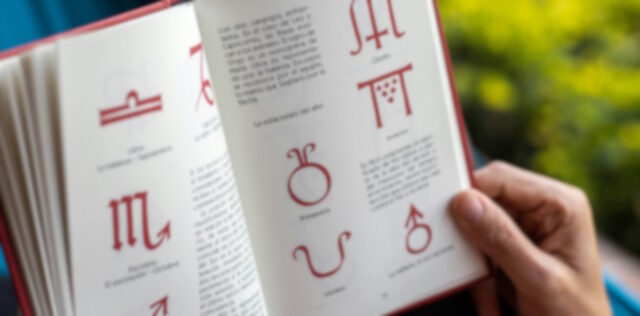“I know that losing your job was hard,” my 8-year-old said to me this evening, “So you can borrow this.” He handed me his newest soft toy.
“It’ll help you feel better when you’re sad. Keep him for the week.”
😭
This checkin to GC47GDB Kiln Crag - Knipescar reflects a geocaching.com log entry. See more of Dan's cache logs.
A bit of an adventure! Coming directly from the next nearest cache on this pasture I first arrived some way above the GZ. Being a little wary of cliffs since my dad’s death1, I opted to loop around and approach from below.
The scramble wasn’t especially hard, but it was unfruitful. Several attempts at the hint location, climbing and reaching, revealed nothing at all.
I decided to descend, find a spot of soft grass, and take a break, perhaps to look at the recent logs in case they revealed a clue: something I’d missed. And there, in the spot I chose for my rest… I found the cache! It must have been dislodged, perhaps over the winter rains, and fallen from its hiding place. The container is cracked (though it might have been already, based on the logs) and the logbook has clearly been wet and re-dried, but free cache was intact enough to sign the log.
I returned the container to what I suspect must have been its correct home, based on the hint. Hopefully it’ll stay nestled safely there until the next cacher comes this way! TFTC!
1 He fell off a cliff off High Street, just over the valley: what a tragic coincidence it would be for me to go the same way, so nearby!
This checkin to GC1DH2A Knipe Scar - Haweswater View reflects a geocaching.com log entry. See more of Dan's cache logs.
How delightful to find such a well-sized and well-placed geocache, and in such a beautiful spot. Some fellow volunteers and I are spending the week in Bampton, working on improving some software that underpins the volunteer and rota management systems of a few hundred different charities.
Never one to let a hard day’s voluntary work keep me from a geocaching expedition, this afternoon I took a hot brisk walk up the scar to find this (and hopefully next another nearby!) cache. Caught my breath sitting on a rock near the GZ, before pressing on. SL, TNLN, TFTC. FP awarded for such a delightful spot.
I’m in an extremely rural area and I needed a phone call with my lawyer about my recent redundancy. Phone signal was very bad, so I resolved to climb a nearby hill and call him back.
“I’m at a crossroads,” I said, when I finally found enough bars to have a conversation with him.
“In your life?” he asked.
“I guess,” I replied, “But also, y’know, literally.”
This bathroom at the holiday home where some fellow volunteers and I are doing some Three Rings work, this week, has a few unusual quirks, including this surprisingly-shit bathroom:
The phone signal is so shit at this year’s 3Camp venue that I’ve had to climb a hill to take a call from a lawyer (whom I’m speaking to about my recent redundancy). Nice to be outdoors, though!
This is a repost promoting content originally published elsewhere. See more things Dan's reposted.
In the fight for equal representation for polyamorous relationships, polyamorists may have a strange and unlikely ally in… the Scottish Fire Brigade Union:
Scotland’s Fire Brigade Union (FBU) has been blasted after calling for more legal protections for Scots who have more than one romantic partner. Members of the group, which is meant to campaign to protect firefighters, want to boost the legal rights of polyamorous people.
…
I love that a relatively mainstream union is taking seriously this issue that affects only a tiny minority of the population, but I have to wonder… why? What motivates such interest? Are Scottish fire bridades all secretly in a big happy polycule together? (That’d be super cute.)
Anyway: good for them, good for us, good all round at a time with a bit of a shortage of good news.
This checkin to GC1DH7W Knipe Scar - On the Edge reflects a geocaching.com log entry. See more of Dan's cache logs.
A swift uphill scramble for my friend and fellow volunteer John and I, before dinner. We’re staying in a nearby farmhouse for a week of volunteer work, writing software to help charities. Beautiful view from the summit this evening! SL, TNLN, TFTC!
I’m off for a week of full-time volunteering with Three Rings at 3Camp, our annual volunteer hack week: bringing together our distributed team for some intensive in-person time, working to make life better for charities around the world.
And if there’s one good thing to come out of me being suddenly and unexpectedly laid-off two days ago, it’s that I’ve got a shiny new laptop to do my voluntary work on (Automattic have said that I can keep it).
This checkin to GC97N3H Lodge Hill C & D reflects a geocaching.com log entry. See more of Dan's cache logs.
QEF as a cache-and-dash. This afternoon, owing to Some Plot, I needed to go speak to a lawyer in Abingdon, and rewarded myself on a successful mission by visiting this cache on my way home. TFTC!
Apparently Automattic are laying off around one in six of their workforce. And I’m one of the unlucky ones.
Anybody remote hiring for a UK-based full-stack web developer (in a world that doesn’t seem to believe that full-stack developers exist anymore) with 25+ years professional experience, specialising in PHP, Ruby, JS, HTML, CSS, devops, and about 50% of CMSes you’ve ever heard of (and probably some you haven’t)… with a flair for security, accessibility, standards-compliance, performance, and DexEx?
CV at: https://danq.me/cv
My star sign is Aquarius. Aquarians are, according to tradition: deep, imaginative, original, and uncompromising. That sounds like a pretty good description of me, right?

Now some of you might be thinking, “Hang on, wasn’t Dan born very close to the start of the year, and wouldn’t that make him a Capricorn, not an Aquarius?” I can understand why you’d think that.
And while it’s true that I was assigned the star sign of Capricorn at my birth, it doesn’t really represent me very well. Capricorns are, we’re told, serious, disciplined, and good with money. Do any of those things remotely sound like me? Not so much.
So many, many years ago I changed my star sign to Aquarius (I can’t remember exactly when, but I’d done it a long while before I wrote the linked blog post, which in turn is over 14 years old…).

I’ve been told that it’s not possible to change one’s star sign.
But really: who has the right to tell you what your place in the zodiac is, really? Just you.
And frankly, people telling you who you can and can’t be is so last millennium. By now, there’s really no excuse for not accepting somebody’s identity, whether it’s for something as trivial as their star sign… or as important as their gender, sexuality, or pronouns.

All of which is to say: I’ve launched a(nother) stupid website, ChangeYourStarSign.com. Give it a go!
It’s lightweight, requires no JS or cookies, does no tracking, and can run completely offline or be installed to your device, and it makes it easier than ever for you to change your star sign. Let’s be honest: it was pretty easy anyway – just decide what your new star sign is – but if you’d rather have a certificate to prove it, this site’s got you covered.
Whether you change your star sign to represent you better, to sidestep an unfortuitous horoscope (or borrow a luckier one), or for some other reason, I’d love to hear what you change it to and how you get on with it. What’s your new star sign?
This is a repost promoting content originally published elsewhere. See more things Dan's reposted.
Sean McPherson, whom I’ve been following ever since he introduced me to the Five-Room Dungeons concept, said:
…
There is a lot of smoke in the work-productivity AI space. I believe there is (probably) fire there somewhere. But I haven’t been able to find it.
…
I find AI assistants useful, just less so than other folks online. I’m glad to have them as an option but am still on the lookout for a reason to pay $20/month for a premium plan. If that all resonants and you have some suggestions, please reach out. I can be convinced!
…
I’m in a similar position to Sean. I enjoy Github Copilot, but not enough that I would pay for it out of my own pocket (like him, I get it for free, in my case because I’m associated with a few eligible open source projects). I’ve been experimenting with Cursor and getting occasionally good results, but again: I wouldn’t have paid for it myself (but my employer is willing to do so, even just for me to “see if it’s right for me”, which is nice).
I think this is all part of what I was complaining about yesterday, and what Sean describes as “a lot of smoke”. There’s so much hype around AI technologies that it takes real effort to see through it all to the actual use-cases that exist in there, somewhere. And that’s the effort required before you even begin to grapple with questions of cost, energy usage, copyright ethics and more. It’s a really complicated space!
8-year-old, angry: Give me that fucking thing right now!
Me: [Child’s name]! That’s not an acceptable way to ask for something!
8-year-old, calmer: Sorry. PLEASE can you give me that fucking thing?
This is a repost promoting content originally published elsewhere. See more things Dan's reposted.
…
Every article glorifying it.
Every article vilifying it.
Every pub conversation winding up talking about it.
People incessantly telling you how they use it.
I feel dirty using it.
You know what I’m talking about, even though I’ve not mentioned it.
…
If you don’t know what “it” is without the rest of the context, maybe read the rest of Paul’s poem. I’ll wait.
As you might know, I remain undecided on the value of GenAI. It produces decidedly middle-of-the-road output, which while potentially better than the average human isn’t better than the average specialist in any particular area. It’s at risk of becoming a snake-eating-its-own-tail as slop becomes its own food. It “hallucinates”, of course. And I’m concerned about how well it acts as a teacher to potential new specialists in their field.
There are things it does well-enough, and much faster than a human, that it’s certainly not useless: indeed, I’ve used it for a variety of things from the practical to the silly to the sneaky, and many more activities besides 1. I routinely let an LLM suggest autocompletion, and I’ve experimented with having it “code for me” (with the caveat that I’m going to end up re-reading it all anyway!).
But I’m still not sure whether that, on the balance of things, GenAI represents a net benefit. Time will tell, I suppose.
And like Paul, I’m sick of “the pervasive, all encompassing nature of it”. I never needed AI integration in NOTEPAD.EXE before, and I still don’t need it now! Not
everything needs to be about AI, just because it’s the latest hip thing. Remember when everybody was talking about how everything belonged on the blockchain (it doesn’t): same
energy. Except LLMs are more-accessible to more-people, thanks to things like ChatGPT, so the signal-to-noise ratio in the hype machine is much, much worse. Nowadays, you actually have
to put significant effort in if you want to find the genuinely useful things that AI does, amongst all of the marketing crap that surrounds it.
1 You’ll note that I specifically don’t make use of it for writing any content for this blog: the hallucinations and factual errors you see here are genuine organic human mistakes!